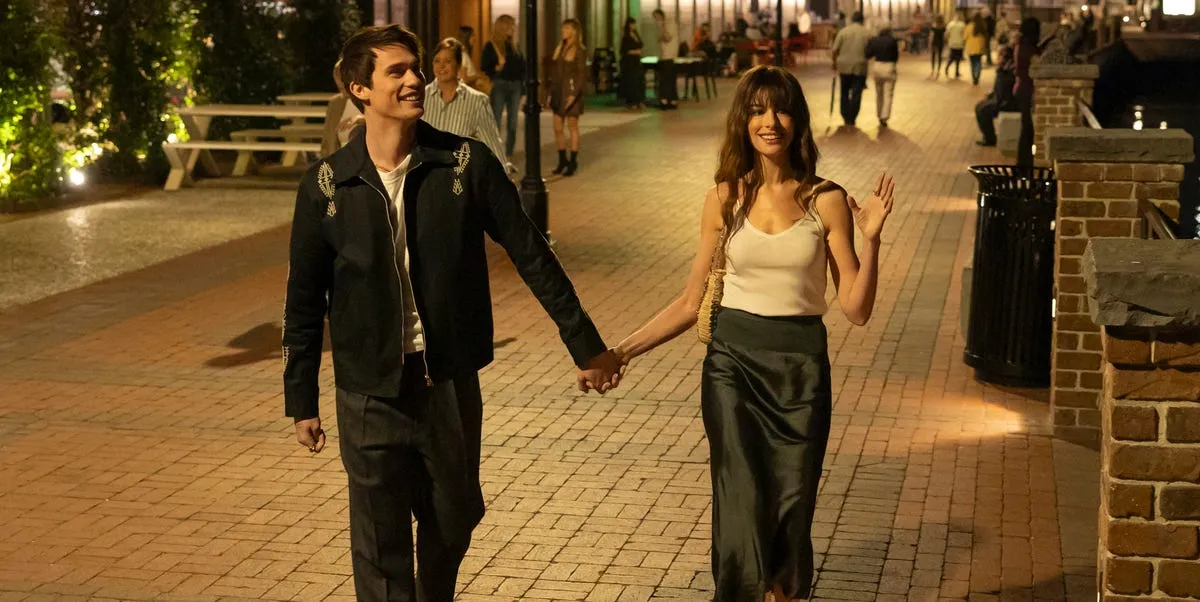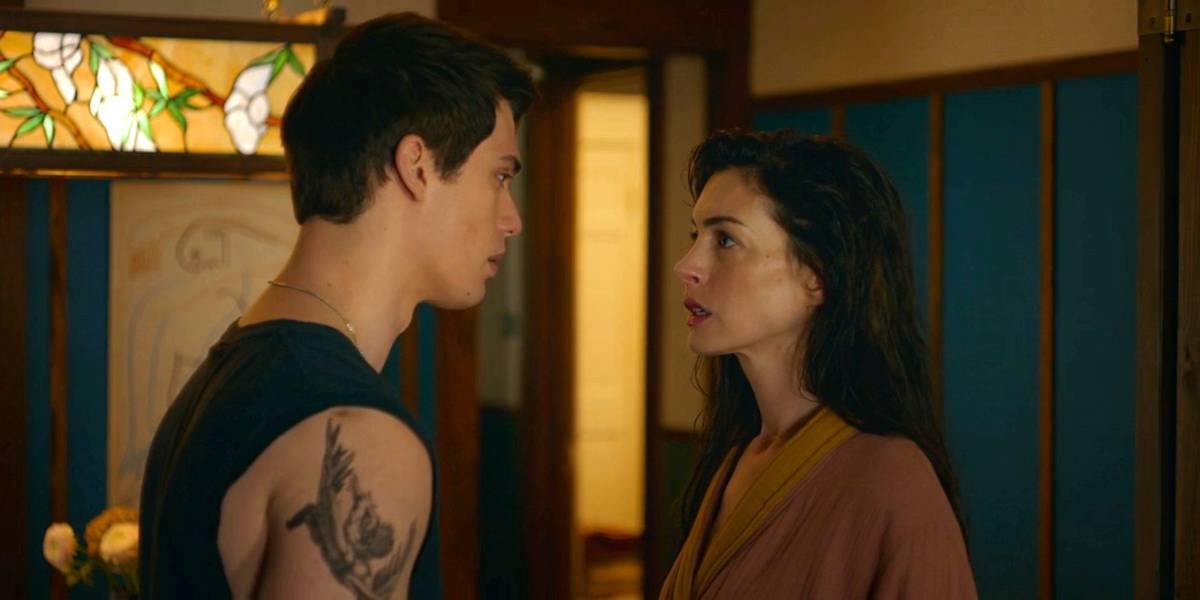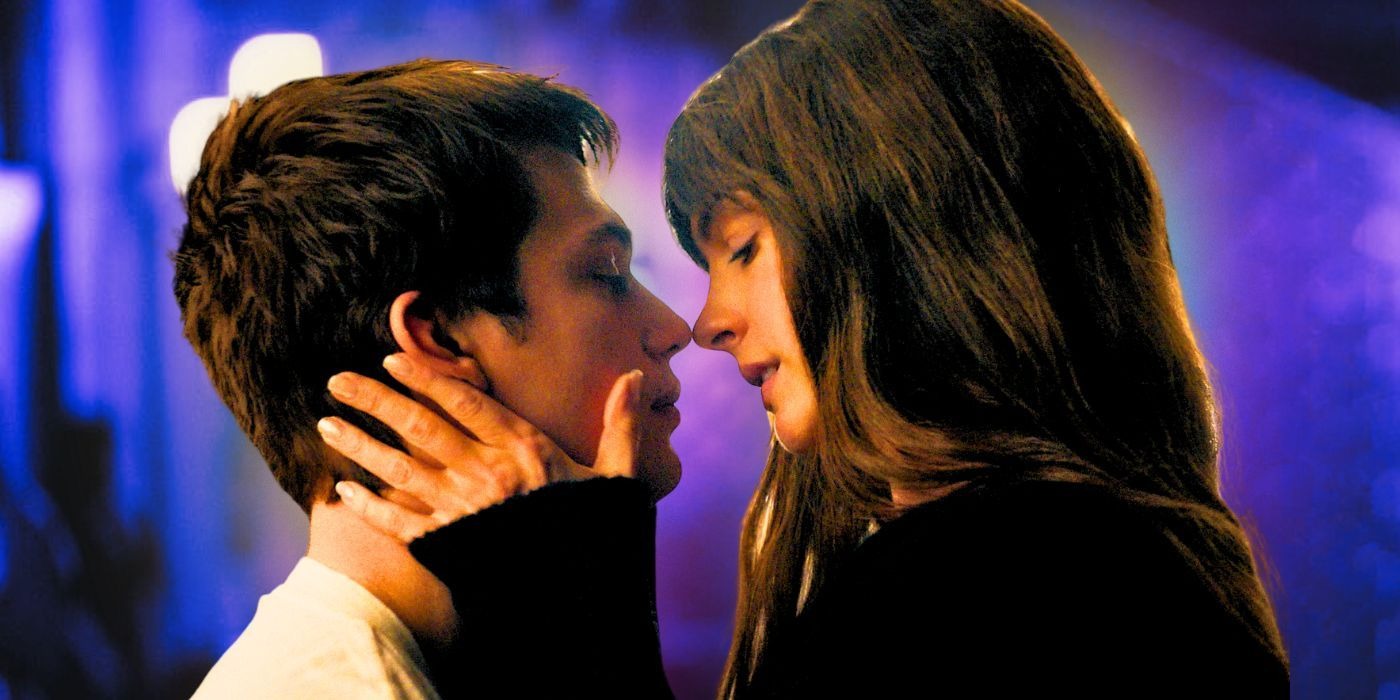The film version of The Idea of You, now streaming on Prime Video since May 2, presents a more uplifting final scene compared to Robinne Lee’s 2017 book. This romantic comedy centres on Solène (played by Anne Hathaway), a 40-year-old art gallery owner who no longer believes in love after a tough divorce.
She crosses paths with Hayes (Nicholas Galitzine), a 24-year-old pop star who’s part of the world’s most popular boy band and is longing for something real. Their first meeting happens when Solène mistakenly enters Hayes’s trailer at Coachella, thinking it’s a restroom.

That chance encounter leads to a fiery relationship that soon attracts widespread public attention. While Lee gives Solène and Hayes a more bittersweet goodbye in the original novel, the movie version leaves viewers with a sense of hope about their future together.
The following paragraphs will look at how the two endings differ and what the film brings to the story.
How does the book end?
When the story reaches its final chapter in Robinne Lee’s novel, Solène makes the difficult choice to walk away from Hayes, even though their connection is still strong. She realises that the attention surrounding their high-profile romance is beginning to affect her daughter Izzy, who is still in her teenage years.
With this in mind, Solène chooses to prioritise her daughter’s wellbeing and ends things with Hayes. Though Hayes begs her to give their love another try, Solène avoids all communication with him and tells a painful lie — that she no longer has feelings for him.
He keeps calling and messaging her daily for several months, but she ignores his attempts. Eventually, his efforts stop, although Solène admits that she was still in love with him long after the messages stopped coming.
How does the movie’s ending differ from the book’s?
Solène’s decision to end things with Hayes still happens in the movie, and it’s for the same reason — her daughter Izzy’s emotional welfare. She tells Hayes, “She didn’t sign up for any of this, and it’s too much for her. I have to put her first.” They then share one last night together.
During that night, Hayes asks her to promise they’ll consider trying again in five years. Solène replies, “It’s too long. If you get a shot at happiness, you take it. And I will, too, okay?” Soon after, the movie jumps forward by five years.

Izzy has moved away to Chicago for university, and Hayes is now enjoying success as a solo artist. One night, while watching TV alone, Solène comes across an interview with Hayes. He mentions he’ll be visiting Los Angeles soon, saying, “There’s someone I would like to see there.”
Next, we see Solène at work in her gallery. Hayes walks in, and they both share warm smiles. The screen fades to black without telling the audience what happens next, but it’s clear the filmmakers want viewers to believe that Solène and Hayes may be getting a second chance.
During an interview with TV Insider, director Michael Showalter talked about why the film ends this way instead of following the book. He said romantic films often change the ending so that the two leads can still find each other again, even if it’s not spelled out completely.
“Moviegoers just want to feel there’s some hope between the couple by the end,” he said. “We’re not spelling it out. We’re not giving them all the details. But we are leaving enough room for people to imagine something more.
I like romantic endings where the main couple reconnects over something as simple as coffee — it suggests there’s still a path forward.”



